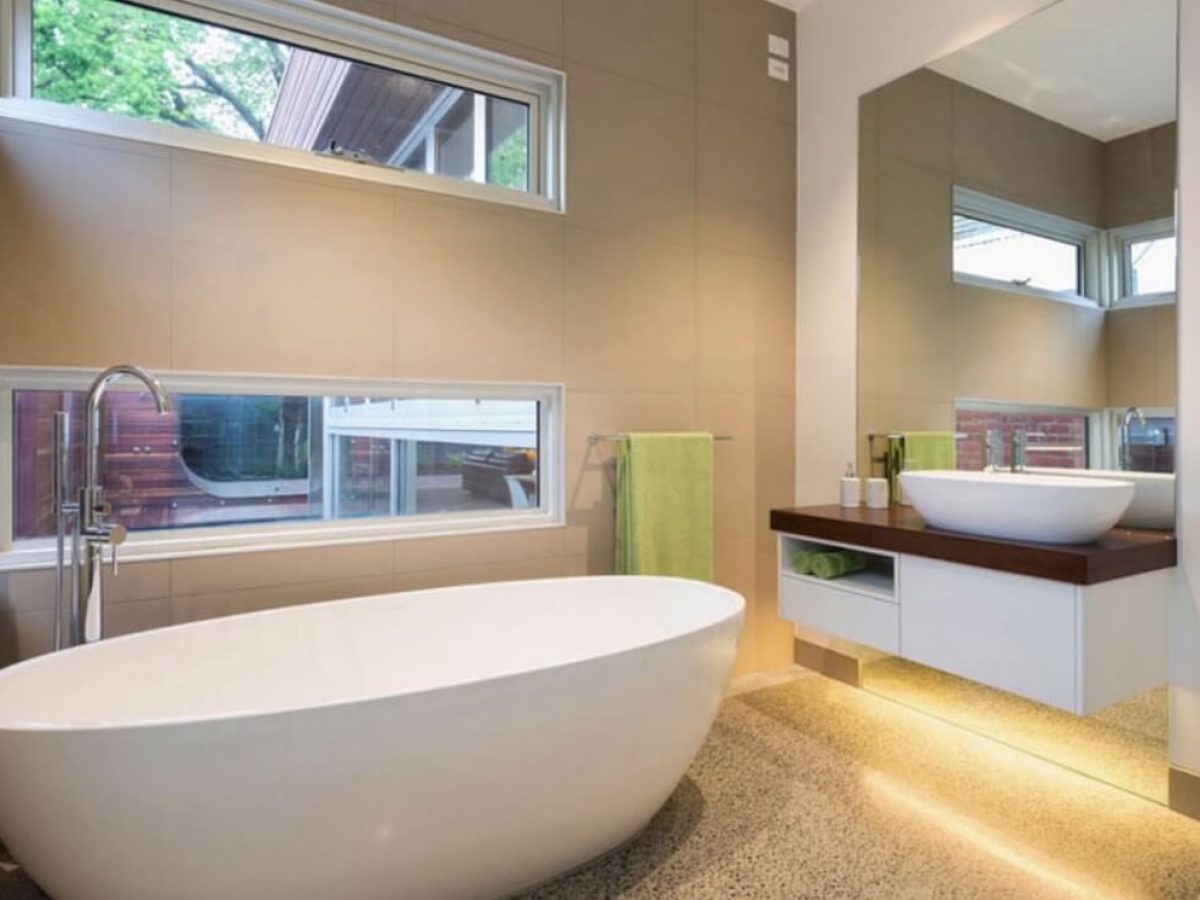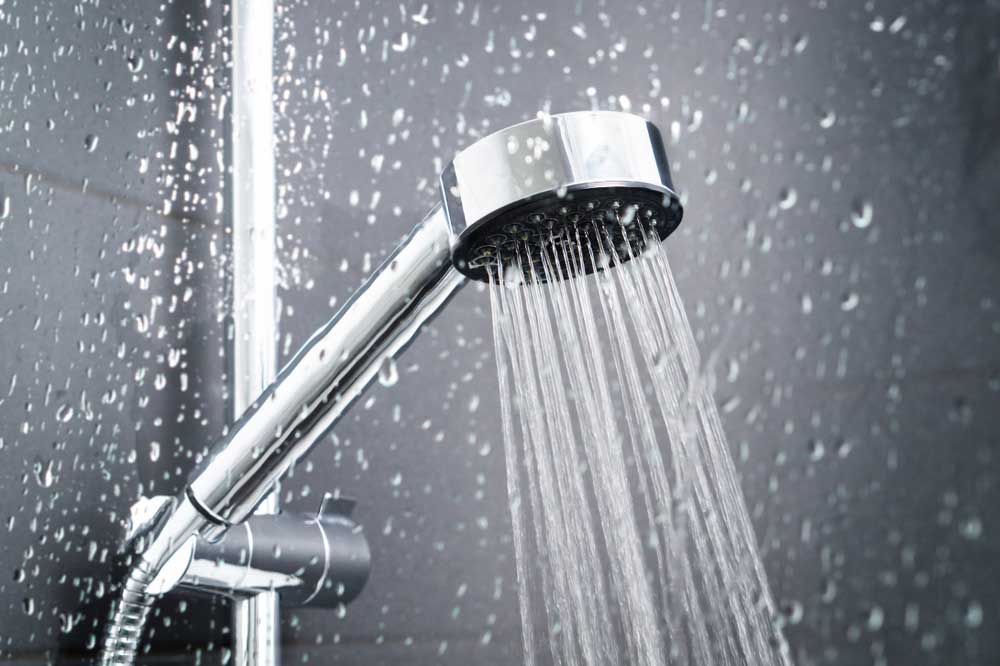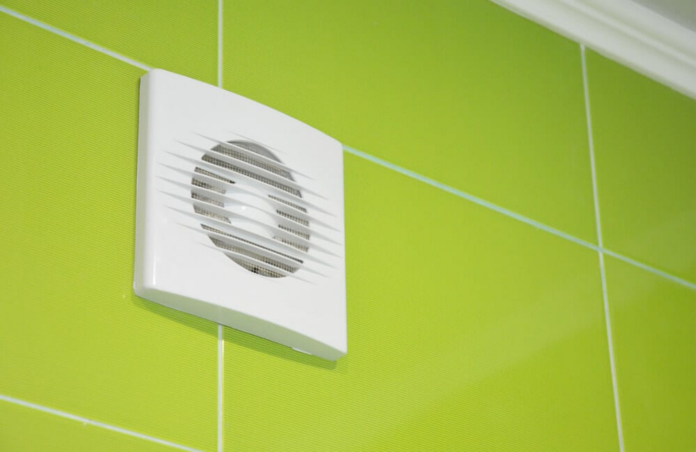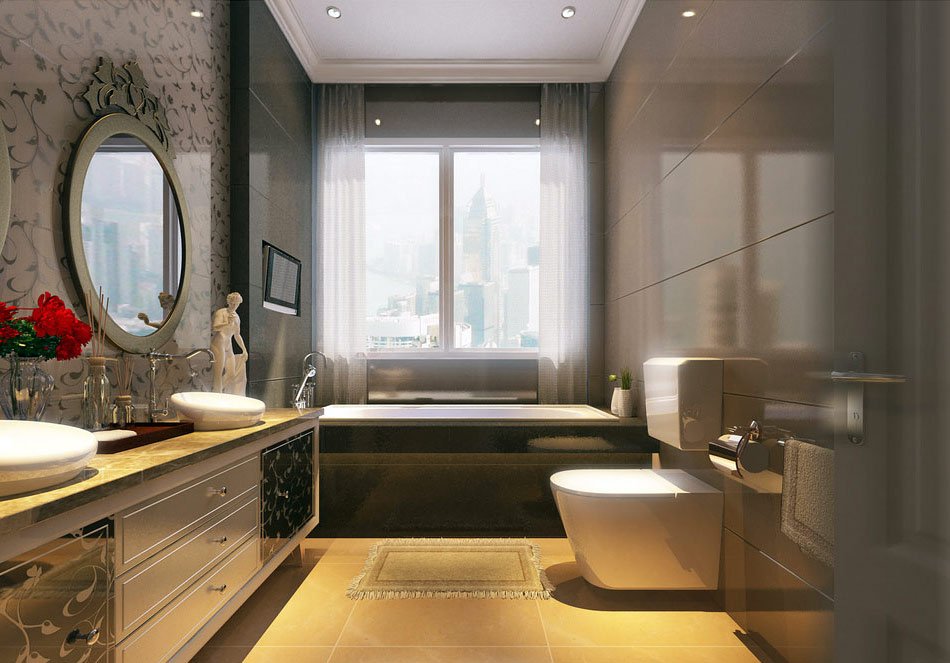Between showers, baths, drying towels or even laundry, the bathroom produces a large amount of water vapor. With or without a window, it is a question of evacuating it quickly and efficiently, for your health, and for that of your home. Let’s see the explanation and tips to reduce the moisture in the bathroom!
Air, Even in Winter
Whatever the ventilation system in your home, it is recommended to ventilate the rooms for 5 to 10 minutes per day to circulate the air and renew it. This is also true in the bathroom if it has a window. This solution is very effective in quickly wicking moisture away, but it is not sufficient.
At a minimum, your accommodation must be equipped with natural ventilation. The principle is simple: the new air enters through low grids into the living rooms, and comes out, loaded with humidity, through high grids in the bathroom fan with humidity sensor. In order for air to enter, you need to create an air gap of 2 cm under your bathroom door. Is this the case with you?
Efficiently Ventilate the Entire Home
Natural ventilation is a good start but it is not always guaranteed because it depends … on the weather! To work well, you need wind and a temperature difference between the outside and the inside. In short: it is effective in winter, but less effective in summer.
Maintain Ventilation
In order for the air to circulate well, it must be able to enter and leave the house. Never block the grilles and air vents.
Regularly dust the air inlets in the living rooms with a vacuum cleaner or with a cloth. A precaution if you remove the covers: reassemble them in the right direction, the air must always come out upwards.Clean the grilles with a cloth and the shutter (only) of the VMC vents with hot water and washing up liquid.
Check that the extraction vents are working by bringing a sheet of paper towel closer: it should rest against the mouth.Finally, check the batteries of remote controls or vents with presence detectors.A complete annual maintenance of the CMV is recommended by a professional, and at least every 3 years.

Insulate the Bathroom from the Cold
This is to avoid condensation, the first cause of humidity in the house and in particular in the bathroom. Condensation forms when humid air meets a cold wall (windows, walls, etc.). This phenomenon causes mold, clogs joints, blisters paints, and gives off bad odors.
Better insulation will also give you more comfort and reduce your heating consumption. A more than beneficial operation!
Let the Humidity Out
Sometimes the humidity in the bathroom comes from outside. Check that your windows are properly sealed: do they allow water and cold to pass through? If so, redo the joints.
If your window is single-glazed, this is a good opportunity to replace it with a double-glazed, more insulating model, which will prevent condensation on the glass.
Heat Well
Heating acts directly on humidity because warm air absorbs more humidity than cold air. Good heating is therefore essential so that the walls, floors and towels dry as quickly as possible. But it does not replace the action of ventilation, which must be active at the same time.
Bathroom space is often very restrictive, but if possible, position the towel warmer against the cold wall to prevent condensation. If you have central heating, know that there are mixed models, which also run on electricity: it is ideal for the off-season when your boiler is off.
Dry the Laundry Differently
If possible, avoid drying laundry in the bathroom. Prefer the outside of the house when the weather is nice or a well-ventilated room. If you have no choice, equip yourself with a dryer (separate or combined with your washing machine) and connect it to an exhaust duct leading to the outside.
Spin the laundry as much as possible before putting it in the dryer and do not leave wet laundry in your laundry tub or machine. Finally, keep your washing machine open so that it dries faster.
Replace the Shower
What if the humidity came from your shower? Look closely and resume sealing where it is lacking if possible. If your shower is very old, cracked, etc. now is the right time to replace it with a complete shower enclosure. Some models even include a roof.

The system is perfectly sealed: The humidity produced condenses on the walls and flows through the booth evacuation. While waiting to equip yourself, limit the duration of the showers to reduce the amount of water vapor produced, wipe down the walls of the shower or bathtub after use and extend the shower curtain well so that it dries quickly. It will be better already!
Choose Materials that Don’t Like Water
Water should never permeate the walls. Water-repellent materials (e.g. water-repellent plasterboard) are required for structural elements and for linings. A waterproofing under tiles is essential on the walls exposed to water like the inside of the shower and the periphery of the bathtub.
This also includes adhesives, which must be adapted to the humid environment of the bathroom. Some are even fungicides. Goodbye mushrooms!
Track Down Water Infiltrations
This is of course the priority if the humidity suddenly becomes more important. Track down leaks and check your tile joints, mainly in the shower or around the tub.
When the waterproofing weakens, water seeps between the tiles, and permeates the walls.The simplest solution is to apply silicone sealant to sensitive points: around the shower, corners, etc. To your guns!
Dehumidify
If none of the previous measures deal with the excess humidity in your bathroom, or if you cannot do the work that is necessary immediately, equip yourself with a dehumidifier.
Another tip: Place a moisture-absorbing bag in the cabinet in which you store your towels. They will always be dry.
All you have to do is jump in the water to stay dry in your bathroom. The right humidity levels? Between 40 and 60%, outside of shower or bath times, of course.


















